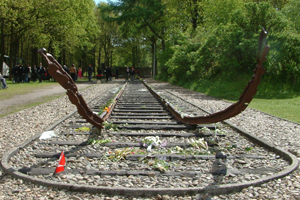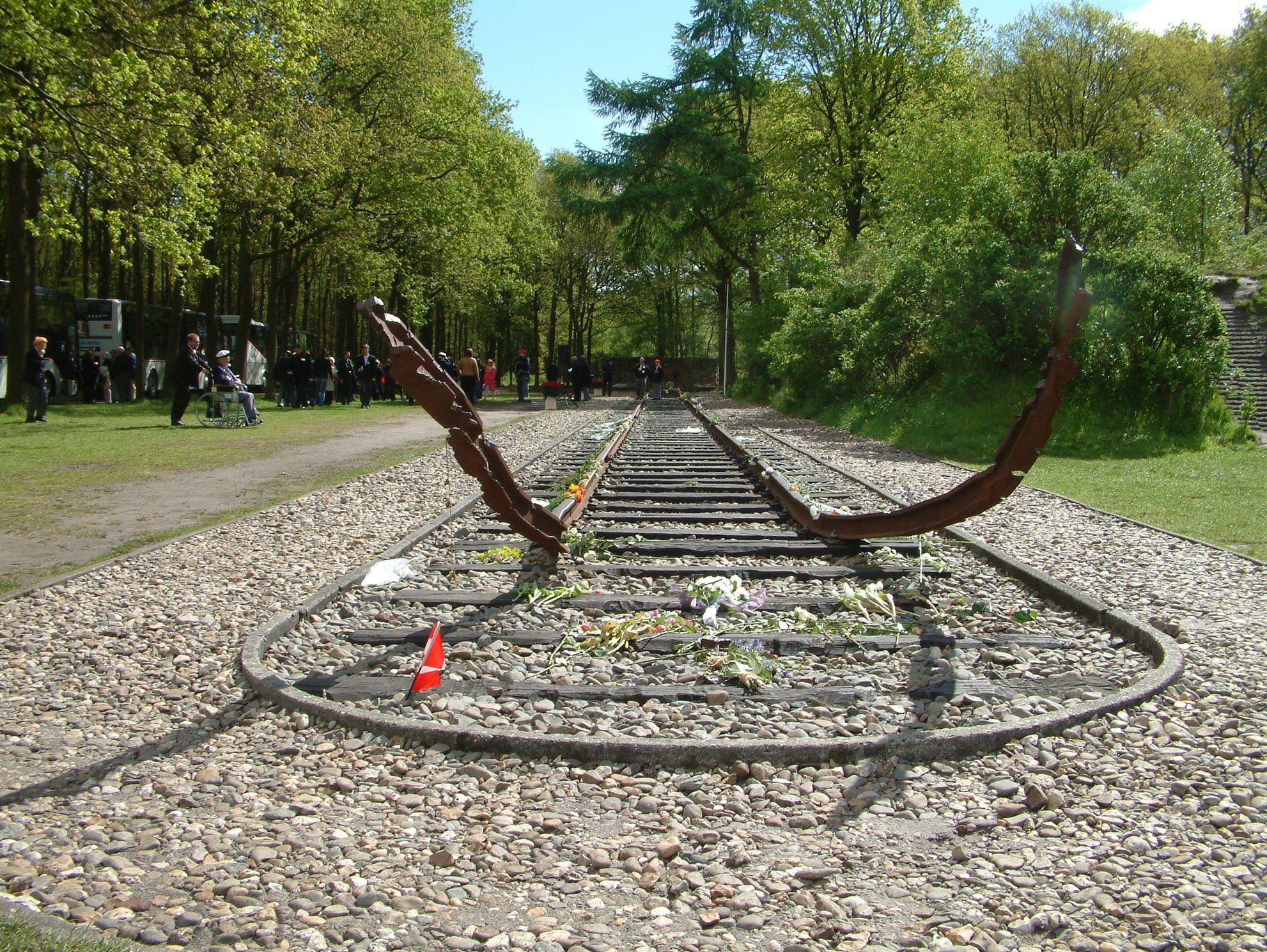More than 100,000 people were deported from Kamp Westerbork in 93 transports. From early 1943, a weekly rhythm developed. A train consisting of cattle wagons with an average of 1,000 people on board, left every Tuesday. The deportations were mainly organized from Berlin. The usual destination was Auschwitz or Sobibor. Sometimes the train left for Bergen-Belsen and Theresienstadt as well. The last train left Westerbork on September 13, 1944 carrying 77 young children who had been taken away from their hiding places by the Nazis.
Kamp Westerbork is now a commemoration centre. It has been restored so the original scale and location of the barracks can be determined. Railway tracks leading to the concentration camps have been symbolically lifted, twisted, and bent in a near circle so no train can ever follow that route again. Old pathways and roads have been rebuilt and on the roll-call square, 102,000 stones rest as a symbol of the Westerbork deportees who were murdered.
Kamp Westerbork - This page is a short walk through the former internment site Kamp Westerbork in the Dutch province of Drente.



